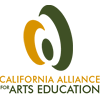Planning Step 2: Describe the Current Reality
The next step in strategic planning is to identify challenges or blocks that may stand in the way of reaching our shared vision. The script below will guide your team through this important next phase of discussion and decision-making.
STAGE 4 – STEP 2 FOCUSED CONVERSATION | Identifying Strengths and Challenges
Objectives
- To analyze our current reality and use it as a springboard for moving into action by articulating both our strengths and our perceived challenges
- To stimulate breakthrough thinking that ignites action
About Strengths
Strengths are things that have the potential to work in your favor. For example, research consistently finds that parents of school age children value arts education. A challenge working against this is that some parents did not experience consistent arts education themselves, so may not see the value in it.
About Challenges
The challenges that are the focus of this conversation are:
- Roadblocks between what exists and our vision of the future (e.g., the accountability demands on schools related to high stakes testing);
- Patterns of behavior or belief system that needs to change;
- The cause of a frustration, not just a symptom;
- A clue to what is not happening, not a lack of something.
Challenges are not “problems.” Problems are things you fix, and you cannot fix an obstacle. You can respond to it, impact it or go around it. It is part of your community and institutional environment. What will need to change for us to reach our vision? Why is it still going on?
Challenges are also not a “lack of” something, for example a lack of money, time or space. They are real blocks. Creating a chart like the one below may help participants avoid “lack of” thinking and get to the real challenge. A list of alternatives to “lack of” is also provided on the last page of this chapter and can be provided to the workshop participants.
Click here [PDF: 27KB] to access a sample list of alternatives to the term “lack of,” which may be helpful to participants in this workshop.
Problem | Underlying Challenge |
Lack of time |
|
Lack of money |
|
Lack of people/staff |
|
Frequently these challenges and obstacles are not obvious. They are like cataracts. You do not see them directly, yet they cloud your vision and blind you to what is in front of you. Institutions that do not deal with their self-images, attitudes, procedures, policies and structures, become entrenched in their convictions and fail in their mission.
As a facilitator you may need to push your group to dig deeper to the real root causes of the challenge. The quality of the truth telling in this section leads directly to innovative actions in the next section of the planning. It’s like dandelions in your lawn. They will persist unless you dig out the whole root.
The Strengths and Challenges Wave
Use 2-4 pieces of chart paper on the sticky wall. Draw a large wave similar to the example below.
Review the Vision
- Ask members of the group to read the vision elements from the previous workshop.
- Which of these elements is most vivid for you?
Identify Strengths
- Chart the ideas from the group in a single color on the left side of the wave.
- What are the strengths that will help us achieve our vision?
- What opportunities and assets exist in our community that can support/enhance our efforts to achieve our vision?
Identify Challenges
For this part of the exercise, the group may find it helpful to refer to the “No Lack Of” chart provided on the following page for ideas about how to articulate the challenges more clearly.
- Chart the ideas from the group in a single color on the right side of the wave.
- What are the weaknesses within our district that will get in our way?
- What challenges exist in our community that may threaten progress toward our vision?
Closing Conversation
- Read through all the strengths aloud. What stands out for you? (Put a bullet beside 5-7 items)
- Now, let’s repeat this for the challenges. Which challenges are most pressing? (Star 5-7 items)
- As you look at the challenges, are there some that are similar and come together to indicate a bigger challenge? (Chart 5-7 key challenges on a separate sheet)
- What are possible actions we could take to impact these challenges and release our vision? Ask the group for a few ideas. These ideas do not need to be charted; they serve as the transition into the next planning step.
- We will now move on to the process of creating actions to move forward.








